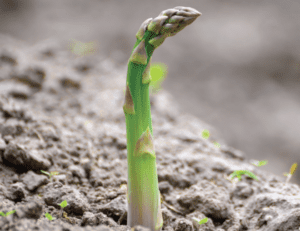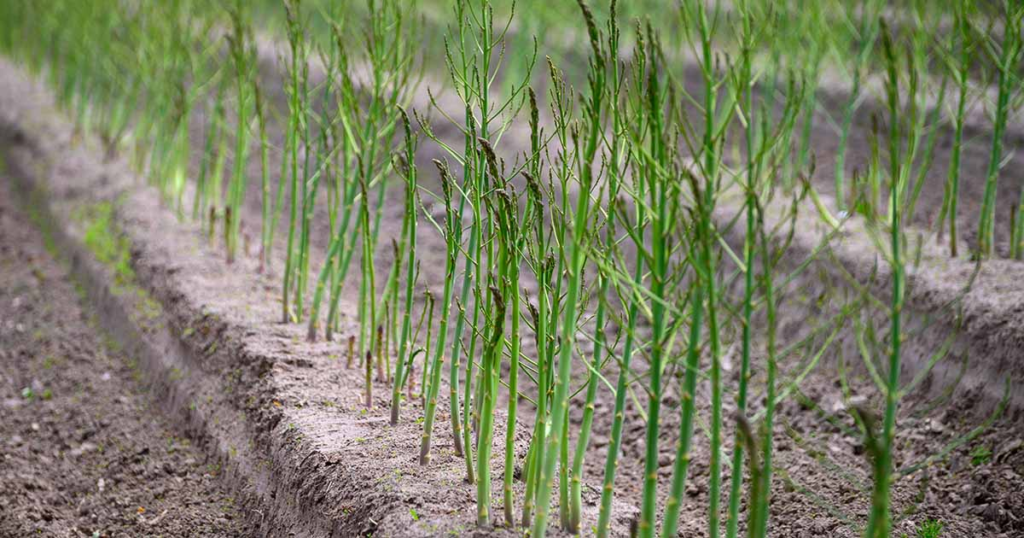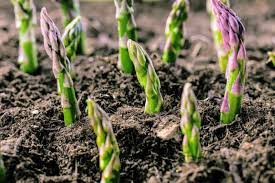Asparagus is a beloved spring vegetable, known for its tender spears that emerge from perennial roots in the cool spring weather. These spears continue to appear until the warmth of summer, when the plants grow into tall, feathery fronds. Growing asparagus is relatively easy in climates with a cold winter chill, but gardeners often encounter questions. Here are answers to six of the most common asparagus-growing questions.
1. Why isn’t my asparagus growing, even though it feels like spring?
Asparagus is sensitive to temperature changes. In research from Michigan State University, it was found that asparagus emergence can vary by up to three weeks, with daytime temperatures playing a larger role than soil temperatures. Cold weather can delay the emergence of spears, while warmer temperatures encourage growth. In most temperate zones, the asparagus season spans from about three weeks before the last spring frost to three weeks after.

2. Why are my asparagus spears spindly after two years of growth?
It’s common for young asparagus plants to produce spindly spears, especially in the first few years. Many online photos depict idealized, large spears, but in reality, asparagus emerges sporadically over six weeks, with some plants producing thicker or thinner spears. Once spears start emerging, it’s essential to harvest them regularly—every other day or daily during warm weather— to promote healthy growth.
3. What are good companion plants for asparagus?
Companion planting for asparagus depends on the plant’s age. In the first two years, strawberries are a great companion as they fill in spaces and suppress weeds. Garlic can also be planted along the edges. As asparagus matures, tall fronds can shade out low-growing plants, so it’s better to mulch and plant annuals like calendula around the bed. For a productive summer, consider planting cherry tomatoes or tomatillos on the east side of mature asparagus; their vining growth complements the asparagus’s tall fronds, creating a harmonious garden environment.

4. Should I cut or snap off asparagus when harvesting, and how should I store it?
Asparagus spears naturally snap at the point where they become tough, so snapping them off is perfectly fine. Using a knife can be cumbersome and may risk damaging emerging buds. For storage, place asparagus in a jar with the cut ends submerged in about 2 inches of water, or store them in a plastic bag in the fridge. Avoid washing or trimming until just before cooking to prevent the tips from absorbing excess moisture, which can lead to rotting. For tough ends, use a vegetable peeler to remove the skin before discarding.
5. Can I dig up and move my asparagus if I’m moving to a new garden?
While it’s possible to dig up and transplant asparagus in spring or fall, it’s a difficult and labor-intensive process. The roots are extensive, and moving them could disturb the plants or expose them to soil-borne diseases. It’s often a better idea to start fresh with new crowns in your new garden. A new bed of healthy asparagus will establish itself more easily and could even become a lasting legacy for future gardeners.

6. Should I clean up old asparagus stems in autumn, winter, or spring?
If your asparagus is plagued by asparagus beetles, it may be helpful to cut back old stems in late autumn to disrupt the beetle’s life cycle. In colder climates, however, it’s usually best to leave the old foliage in place until early spring. This helps insulate the crowns with snow and provides some winter protection. Clean up the bed in late winter or early spring by removing weeds and applying mulch to protect the soil from erosion. For additional mulch, use the pruned tops of ornamental grasses like miscanthus.
By following these tips, you can ensure a productive and healthy asparagus harvest each season. Happy gardening!
